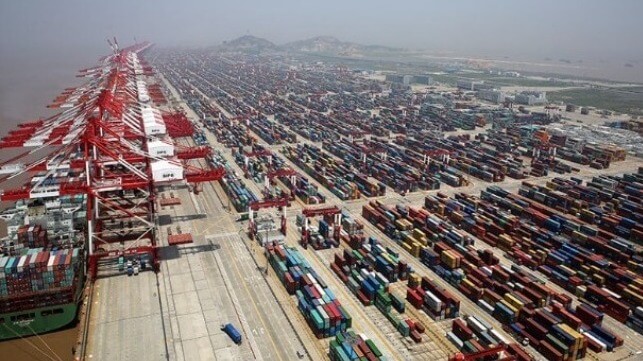Shanghai’s Port is Nearing Normal Operations After Two-Month Lockdown

As China continues to roll back restrictions on most parts of Shanghai, port operations appear to be approaching normal levels. It, however, remains to be seen how quickly throughput can be restored at the world’s biggest container port. Analysts also continue to worry about the possible ripple effect across the global supply chain and the potential for ports in North America and Europe to be challenged by a new surge in volumes.
Starting on June 1 and moving progressively over the past few days, Shanghai has reduced the travel restrictions and moved to get people back to work. Health officials, however, are continuing their close monitoring and quickly reinstating localized restrictions when positive tests for COVID-19 are discovered. Moving from a peak of 25,000 asymptomatic infections per day around April 10 and a peak of over 5,000 confirmed cases in late April, the city reported four locally transmitted COVID-19 cases, four local asymptomatic infections, and three imported asymptomatic infections on Sunday said the Shanghai Health Commission.
“Congestion at the port is almost back to normal,” reports VesselsValue in an analysis of port performance as of June 1, the first day the restrictions were relaxed across Shanghai. According to their analysts, waiting times for containerships, tankers, and bulked have declined by more than half versus the peak in late April. “At the height of reported Omicron cases, average waiting times stretched to 66 hours in late April,” writes VesselsValue. “Waiting times have now shortened to 28 hours, just an hour longer than the top end of the range seen at this time of year over the past three years.”
Some of the decline comes from reduced volumes at the port during the two-month lockdown. Chinese officials reported last week that Shanghai, which normally handles nearly four million TEU a month, had a throughput of just over 3.4 million TEU in May. Maritime AI data intelligence firm Windward highlights in its data that the number of port calls made by container vessels to Shanghai in May dropped 16 percent versus May 2021, down from 1,263 to 1,062 containership calls in May 2022. Further, based on a snapshot of vessels waiting outside Shanghai on June 5, Windward reports “the Shanghai area is far less congested (versus Ningbo), which is not surprising, given the relatively new development of the partial re-opening.”
Despite this decline in the number of vessels, VesselsValue reports that wait times specifically for containerships remain slightly above historic levels. “Average waiting times for containerships, having peaked at 69 hours in late April, are now down to 31 hours, still some 4 hours longer than the higher end of the range seen for the time of year over the last three years.” Congestion for tankers is back within normal bounds according to VesselsValue’s data, and for bulkers it is below historic averages for this time of the year.
The relaxing of restrictions also appears to be having a positive effect on the availability of trucks and the ability to move containers to the port. Bloomberg reporters based in Shanghai are saying that traffic into the city is improving, and gradually reducing the trucking shortage, meaning that reopened factories will be able to send their export goods to the port.

that matters most
Get the latest maritime news delivered to your inbox daily.
“Assuming that trucking capacity returns to normal, we can expect congestion to pick up significantly during June, as factories are starved for raw material and a significant number of empty containers will need to be inserted into the Shanghai area supply chain to cater for further increases as the peak season sets in,” forecasts Windward.
Notwithstanding the concerns for a possible whiplash effect, VesselsValue concludes that there are “many encouraging signs of normalization.” This comes as good news for shippers that had been anxiously watching the lockdown and waiting for goods to ship from Shanghai.
